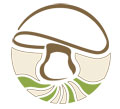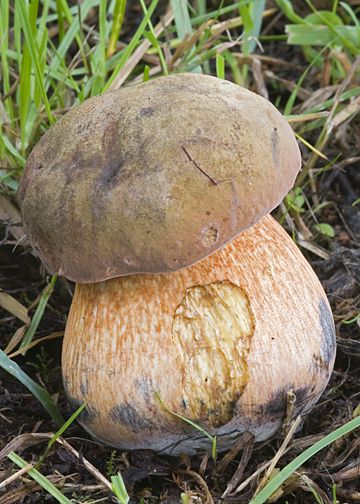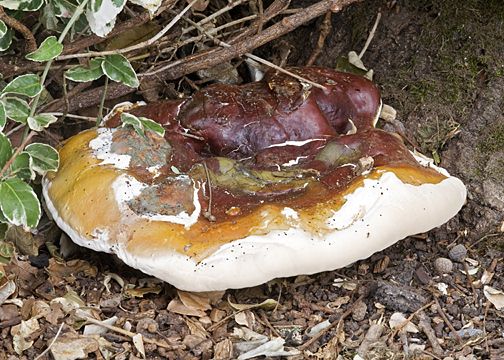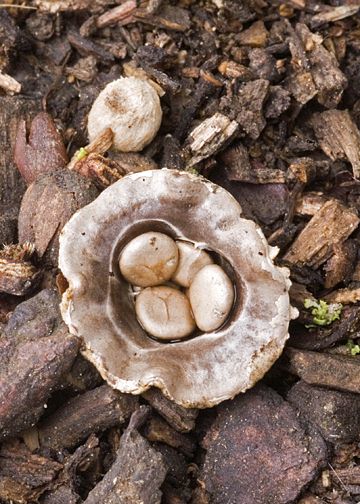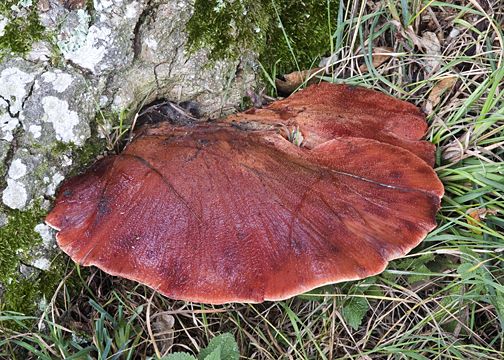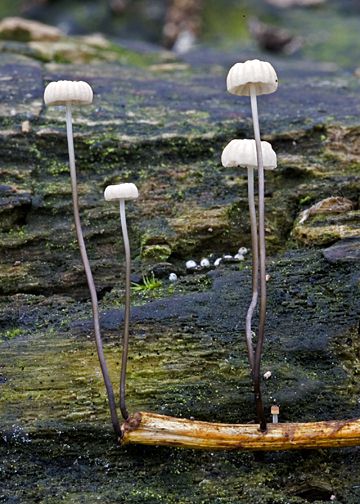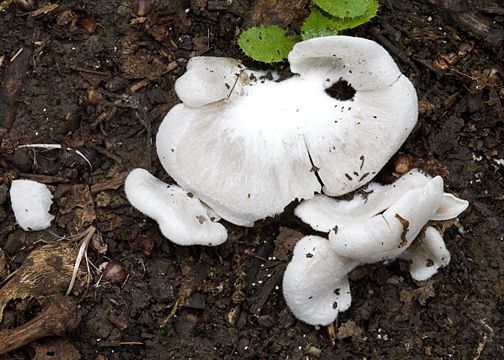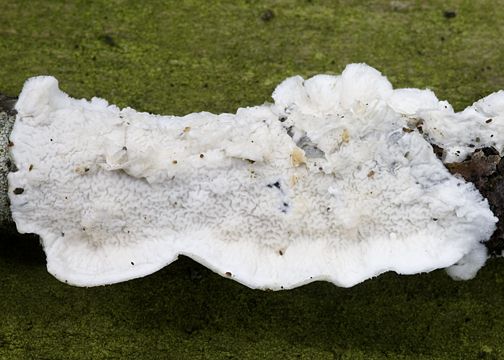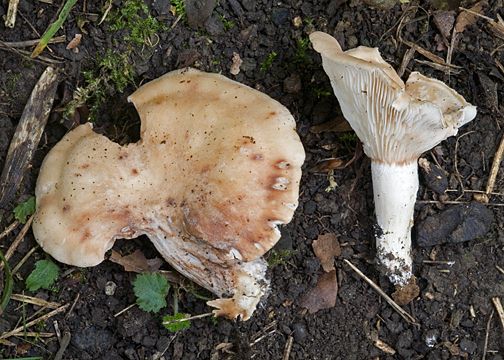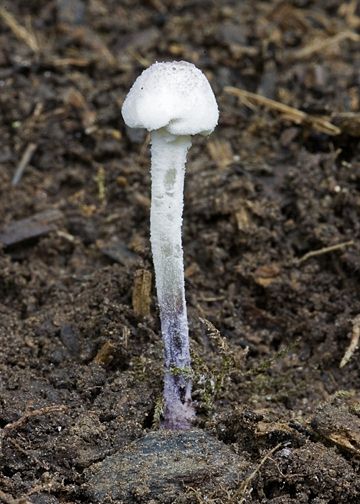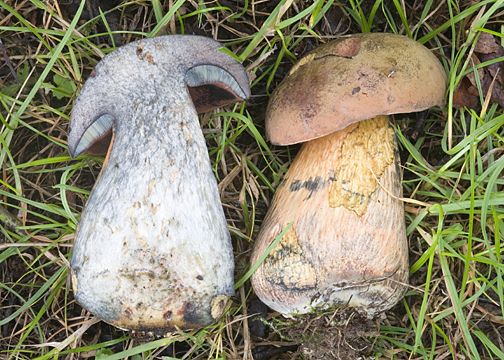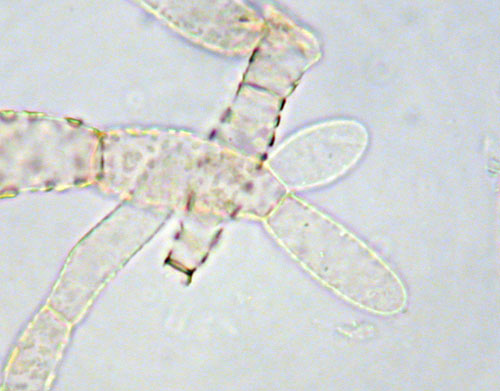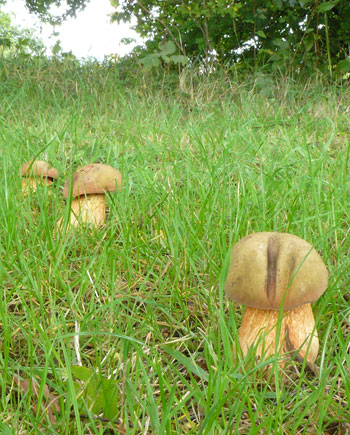Sparsholt College
Sun 22 Aug 2010
Field event ID HF1013
OS Grid areas: SU4132
Weather: Sunny intervals with some rain over the previous few days.
New Records:
New to Hampshire: Xerocomellus bubalinus
New to HFRG: Conocybe rugosa, Lepiota subgracilis
Report: (Eric Janke) What a difference a bit of water makes! The group had hardly left the car park before JP spotted Ganoderma resinaceum at the base of an oak, Eric found Cyathus olla hiding among the LBJs in woodchip on the other side of the tree. Shortly after Paul saw a 'bolete' which he photographed. When reviewing the picture at home he thought it matched the drawing of Xerocomellus bubalinus he had from Geoffrey Kibby's bolete workshop the previous year. Following some emails the identity was confirmed. There are photos showing the pink flush in the flesh under the cap and the 'split ends' to the cap hyphae. There is only one previous record on the FRDBI (Alan Hills first British report) but it has been found since by Alan and Geoffrey and is probably quite common. The short walk to the edge of the woods took far longer than usual as we were distracted by all the fungi which had sprung up overnight in the woodchips and grass. Once in the woods there was no shortage of fruit bodies either and Paul started to fill his memory card recording the various finds: Agaricus silvicola and A. xanthoderma showing how hard it can be to tell them apart, Hymenoscyphus fructigenus found growing on a hazel nuts while Paul was trying to photograph Agaricus moelleri in the gloom, Marasmius rotula and M. bulliardii, both with collars but the latter growing on oak leaves rather than twigs, the uncommon Rhodocybe gemina (aka truncata) and the pretty little orange Mycena acicula but at least he didn't have to record the smell of the Cystolepiota bucknalii! On the way back to the cars the group found three Boletus luridus in a (thin red?) line waiting to be identified. Given the subsequent rain it might be turning into an interesting season (with the usual acknowledgements to fungal gods:-)
Species list: Agaricus moelleri, Agaricus sylvicola var. sylvicola, Agaricus xanthodermus, Auricularia auricula-judae, Bisporella sulfurina, Bolbitius titubans var. titubans, Boletus bubalinus, Boletus luridus var. luridus, Byssomerulius corium, Clitopilus prunulus, Conocybe rugosa, Coprinellus micaceus, Coprinopsis lagopus var. lagopus, Crepidotus autochthonus, Crepidotus cesatii, Cyathus olla, Cystolepiota bucknallii, Daldinia concentrica, Dendrothele acerina, Eichleriella deglubens, Fistulina hepatica, Ganoderma australe, Ganoderma resinaceum, Gymnopus dryophilus, Gymnopus fusipes, Hymenoscyphus fructigenus, Hyphodontia sambuci, Hypomyces chrysospermus, Hypoxylon howeanum, Laetiporus sulphureus, Lasiosphaeria ovina, Lepiota subgracilis, Lycoperdon lividum, Marasmiellus ramealis, Marasmius bulliardii, Marasmius oreades, Marasmius rotula, Mycena abramsii, Mycena acicula, Mycena arcangeliana, Mycena tenerrima, Panaeolina foenisecii, Panaeolus semiovatus var. semiovatus, Paxillus involutus, Peniophora limitata, Phanerochaete sordida, Pluteus phlebophorus, Pluteus plautus, Polyporus leptocephalus, Resupinatus applicatus, Rhodocybe gemina, Russula amoenolens, Russula faginea, Russula grisea, Russula pseudo-olivascens, Russula pseudointegra, Skeletocutis nivea, Stereum hirsutum, Trametes versicolor, Xerocomellus engelii, Xylaria hypoxylon, Xylaria polymorpha
